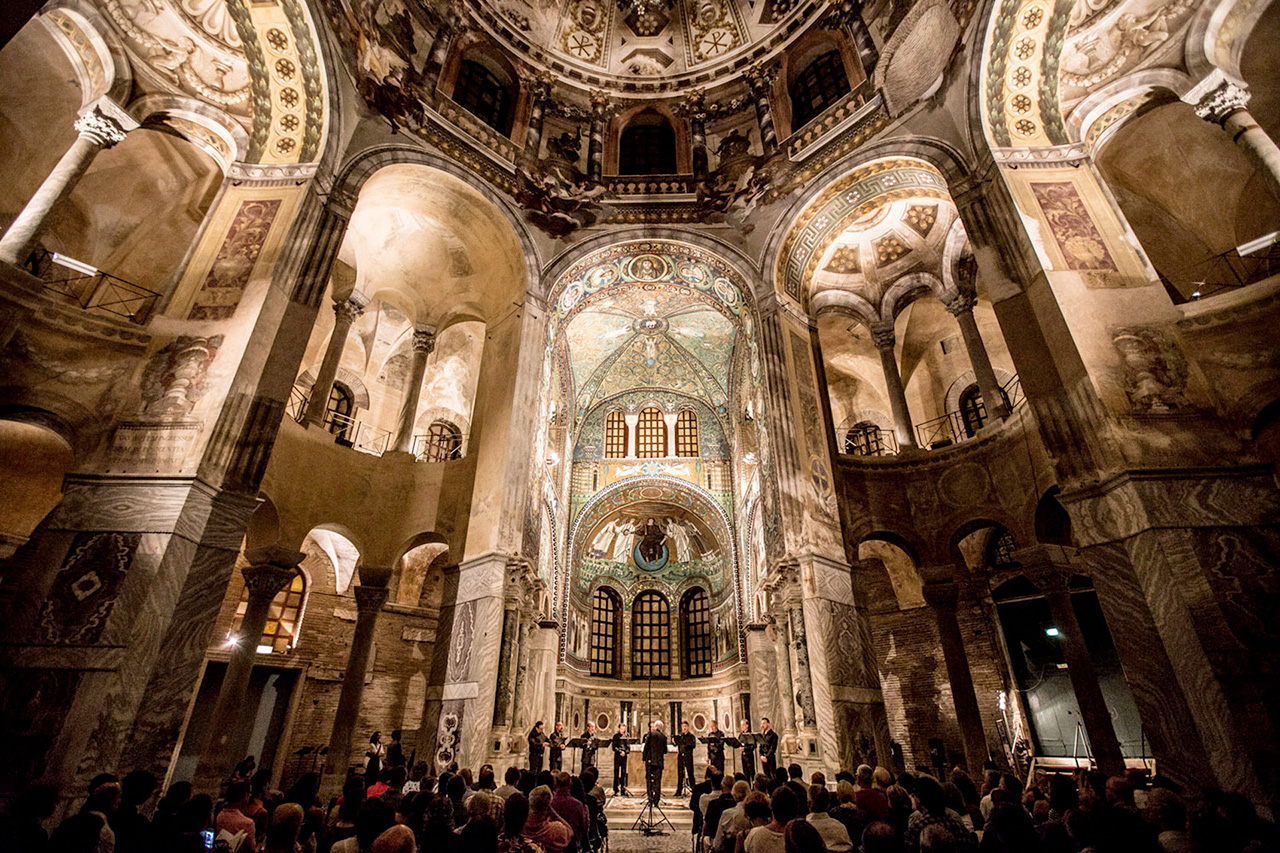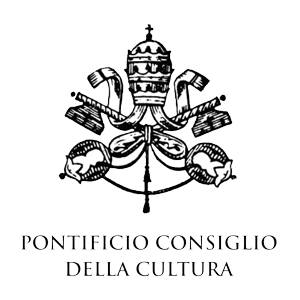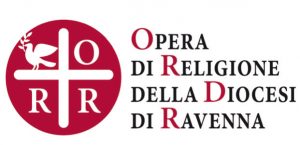© Luca Concas
Vespers at San Vitale
Pulvis et umbra sumus
Palestrina: buildings of the spirit
Consorteria delle tenebre
Teodoro Baù soprano viol
Rosita Ippolito tenore viol
Marco Casonato bass viol
Noelia Reverte Reche bass viol
Programme
Carlo Gesualdo (1566-1613)
Moro lasso al mio duolo
Canzon francese del Principe
Giovanni Maria Trabaci (1575-1647)
Consonanze stravaganti
Carlo Gesualdo
Illumina faciem taum
Scipione Stella (1558-1622)
Partite sopra la Romanesca
Giovanni Maria Trabaci
Durezze e ligature
Carlo Gesualdo
Ave Regina
Paolo Baioni (1963)
Morbo Crudele Avea Rapito
Juan B. Cabanilles (1644-1712)
Jacaras
Renaissance composers did not write either for specific voices or for certain instruments, thus leaving extensive freedom of interpretation. Hence, we can say that the repertoire for viola da gamba practically includes all music that was written at the time. Considering its timbre, viol was considered the instrument that was capable of imitating the human voice more than any other. A characteristic that, especially referred to the creation of consorts, made all viols be often assigned to the performance of vocal polyphonic music, both as a double for the voice and as an exquisitely instrumental ensemble.
On this occasion we propose a tribute to one of the greatest polyphonists and composers of sacred music of the time: Prince Carlo Gesualdo da Venosa. A noble Neapolitan, Gesualdo, nicknamed Prince of Musicians, was a remarkable innovator and precursor of modern music, besides being the author of astounding polyphonic scores.
The consort of viols proposes some of its most famous vocal polyphonic compositions, alongside the instrumental pages of authors of the same period who were acclaimed in the Neapolitan area.
Finally, the composition by Paolo Baioni is a contemporary tribute to the ensemble of ancient instruments.




